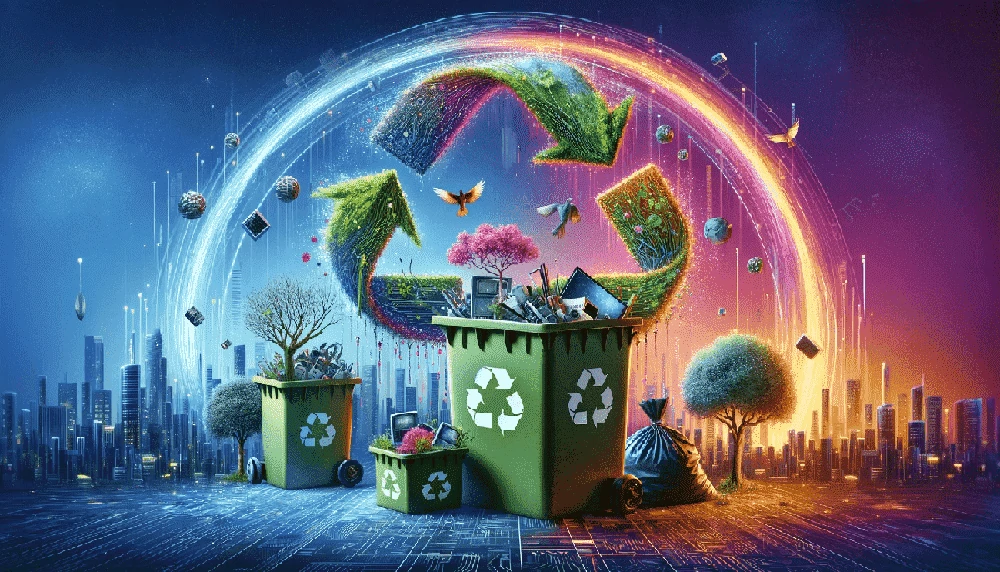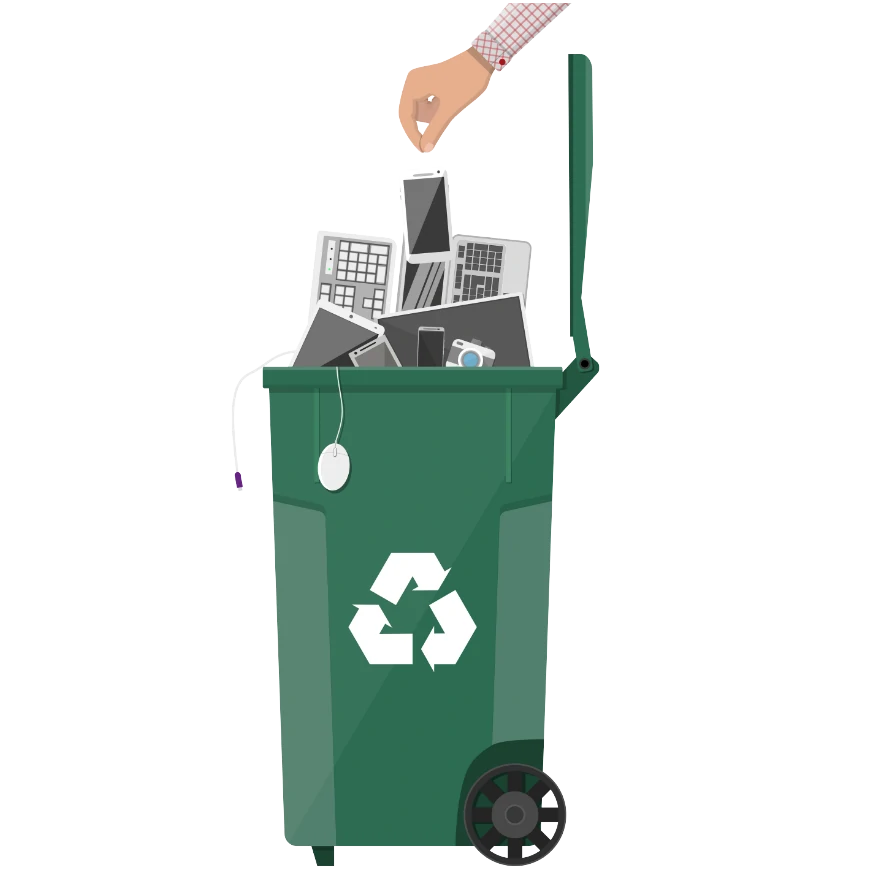The Environmental Impact of E-Waste
The Environmental Impact of E-Waste: A Growing Concern
What is the Environmental Impact of E-Waste? “Our generation had the mindset that the newest gadget was cool. And there was always something new each year: a smartphone a bit quicker, a TV with a clearer picture, or a laptop lighter than air.”
That is just cool, don't you think? But each time we do that and get new technology, our old one will usually end up in a drawer, forgotten there or, worse, in the trash. That's what we call e-waste, and it's adding up into a gigantic pile on this planet. Now, imagine every old phone or laptop just sitting in a landfill.
Not only do they take up space, but they're also packed with stuff that's not good for the earth. Batteries leak ugly chemicals into the ground, and metals that could be recycled sit in one place, going to waste. It's really much like just pouring a bottle of ink into a fish tank; it kind of just goes everywhere and makes a big mess.That's what happens when e-waste isn't taken care of properly.
We can keep an eye out for eco-friendly technology. Companies have started realizing the fact that we do care about the planet; hence, they produce gadgets that are more easily recycled and made of earth-friendly materials. In the business of such companies, supporting them sends another kind of message: "We want cool tech that's also green". Be with us in this section of Rapid Solutions.
What is E-Waste?
E-waste can be referred to as those electronic gadgets and devices that people after their use or when they get out of order throw into the dustbin. It's everything from the phone in your pocket to the fridge in your kitchen. Out of service, they are all part of this category. With the current technology coming and going with seasons, electronic products no longer last like those in olden days. As soon as a new gizmo comes on the market that everybody really has to have, the old version is consigned to the scrap heap. This fast cycle of technology updates is a large reason why more and more e-waste is piling up all around the globe. The more we are turned on by the idea of the latest and greatest in tech, the more giant that pile of electronic waste grows. It's not any ordinary trash; it's a set of advanced devices made of a combination of metals and plastics, even with hazardous materials, and it is deleterious if not handled properly.

our service: IT ASSET DISPOSITION SERVICES
The Environmental Impact
The e-waste environmental impact reaches far beyond the growing mountains of discarded gadgets. It penetrates the very soil, water, and air with a serious challenge not only for the health of our planet but also for the living ecosystems, highlighting the environmental impact of e-waste. So, what are the environmental impacts of e-waste? Let’s dive into the details, starting with toxic chemicals.
Toxic Chemical Menace
Buried within the circuitry and components of our everyday devices lie hazardous substances, including lead, mercury, cadmium, and arsenic. True danger comes in when people throw the gadgets away into the environment carelessly, hence allowing for a chemical leak. If not properly disposed of, it may facilitate some of the dangerous chemicals seeping into the ground from where it can very easily move to water sources or even be released into the atmosphere that we breathe, which shows the impact of e-waste on environment.
However, the results are dangerous; they lead not only to the surroundings of nature and plant life but also link to the food chain in the ecosystem through effects on pollutants and, therefore, even affecting health.
Other articles: Effects of e-waste on human health
The Drain on Earth's Treasures
The sleek gadgets we use every day are the end products of a complex global supply chain that starts with the mining of precious metals and rare earth elements.
The insatiable need for newer, faster and better technology, in turn, leads to the exhaustive depletion of these critical resources at alarming rates. Thus, this demand drives the insatiable need for newer, faster, and better technology, not even remotely close to being sustainable and wreaks regular, even recurring, ecological damage to landscapes, water and biodiversity. The environmental degradation left in the wake of such activities is a stark reminder of the hidden costs of our digital advancements.
Warming the World
the life cycle in electronic waste not only impacts land but impacts really on water, air, and climate. In the processes associated with e-waste disposal and recycling, large quantities of greenhouse gases are released. Particularly concerning are the improper recycling methods, such as the open burning of electronic components. This poses a direct threat to their health and is also problematic for the larger issue concerning climate change, reflecting the e-waste effects on environment. as it also releases a cocktail of poisonous fumes and greenhouse gases into the atmosphere. These gaseous emissions contribute to the burden of pollutants driving climate change in the world and further modify our already changed climate system, illustrating the environmental impact of e-waste.
Other articles: What technology is used in e-waste recycling?
The environmental impacts of e-waste are a multifaceted problem that demands a multifaceted solution. From reducing the use of dangerous substances in electronics manufacturing to improving recycling processes and enacting a more sustainable attitude towards consumption, winning the challenge against this e-waste is vital for the good of our planet and future generations. Considering the benefits of technology to the larger sense of its environmental implications, it will only show that as we go through further in this digital age, we should be very careful.
The Global Scope of the Problem
As the world gets deeper and deeper into the digital age, the growing shadow of e-waste is a problem perceived in most parts of the world. Every year, we are churning out millions of tons of electronic waste—a mind-blowing pile-up of old smartphones, laptops, and other gadgets that have reached their life's end. This mountain of e-waste is not just a small bump on the road; it is a growing crisis spanning continents to reach out to every corner of our planet, highlighting the electronic waste environmental impact.
The problem of e-waste assumes global proportions and underscores the need for international cooperation and action. It very clearly displays the quite pronounced imbalances that exist in the distribution of benefits accruing from and the burdens inflicted by technology worldwide. Now, third world countries have to face these consequences, and they will have to deal with the hazardous waste instead of enjoying the cutting edge of the technology that developed countries do. This has to be taken seriously not only by the government and manufacturers but also by the consumers themselves in the way they are producing and consuming and disposing of their electronic gadgets.
See also: How recyclable are electronics?
But that won't be enough to mend this crisis; governments, businesses, and people need to play their respective roles.
Solutions and Actions
Addressing the e-waste crisis requires a multi-faceted approach involving governments, businesses, and individuals. Here are some key actions that can mitigate the environmental impact of e-waste:

Eco-friendly Design: This is basically the basis, probably, for manufacturers to be environmentally concerned with priority to durable and recyclable products that minimize the environmental footprint from the source.
Responsible Recycling: The right e-waste recycling helps to preserve natural resources, lower down pollution, and save the environment from poisonous waste.
Consumer Awareness: Increasing consumer awareness of the relevance of e-waste recycling and availability of these programs can further prompt the responsible disposal of electronic devices.
Legislation and Regulation: Set strict e-waste management regulations and global cooperation that would increase recycling program effectiveness and reduce illegal dumping.
OUR SERVICES: Electronics Recycling services
Responsible recycling and its importance
Respective Electronic Recycling is a responsible practice when handled correctly; otherwise, it could have adverse effects on the environment. This is exactly where the responsible recycling of e-waste comes in. It’s more than just keeping old gadgets out of landfills; it’s part of the bigger picture we bear in mind when thinking of our planet's finite resources and reducing the environmental toll they suffer from. At Rapid Solutions, we understand the critical importance of handling e-waste with responsibility, ensuring minimal impact on the environment.
Additionally, responsible recycling of e-waste means not allowing dangerous, poisonous, toxic waste to become another source of distress for the environment. Electronics contain hazardous chemicals, and if improperly discarded, they can pose serious risks to both the environment and public health. At Rapid Solutions, we employ advanced recycling processes to neutralize these dangers, ensuring that our air, water and land remain safe and clean, while minimizing the environmental impact of electronic waste.
Promoting Circular Economy Solutions for E-Waste
A significant way to address the environmental impact of e-waste is by embracing circular economy principles. These solutions prioritize designing products with longer lifespans, encouraging repair and reuse, and recovering materials through advanced recycling technologies. By integrating these approaches, organizations and individuals can minimize the extraction of finite natural resources, reduce greenhouse gas emissions, and prevent harmful substances from entering ecosystems. The circular economy not only curtails the environmental burden of e-waste but also fosters innovation and sustainable growth for future generations.
Conclusion
The challenge of managing electronic waste (e-waste) is critical for our planet's health. This would subsequently reduce the impact on the environment brought about by the e-waste through the adoption of sustainable practices, good policies, and public awareness, addressing the relationship between e-waste and the environment. This would include making decisions on the use and disposal of electronics, lobbying for laws that would encourage recycling and sustainable design, and sensitization of others on the matter of electronic waste management. Together, we have the power to lessen our digital footprint and safeguard the environment for generations to come. In this article, we examined The Environmental Impact of E-Waste.



.webp)